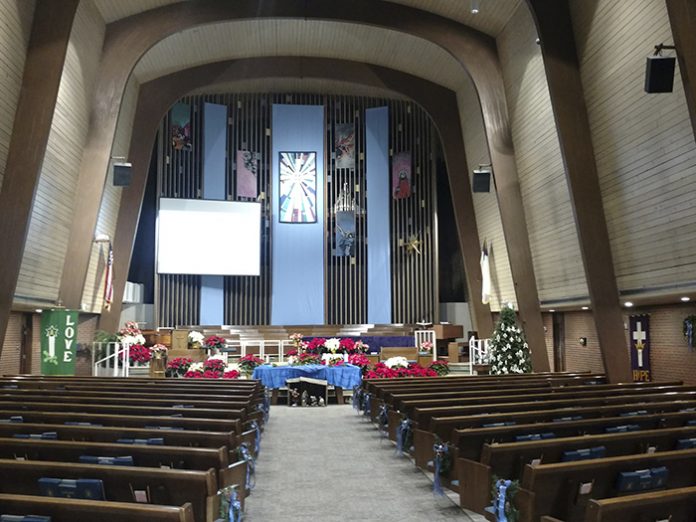The Arvada Presbyterian Church uses a state-of-the-art Symetrix Prism 12×12 DSP, offering auto-mixing with a simple user interface with access to deeper features when needed.
Dave Kistler, president of systems integrators Equalised Productions which designed and installed the Symetrix systems explained: “Their old system, which used an analog mixer, was being run by high school students. When the students went to college, two members of the congregation ran the system, which was okay until those two gentlemen retired and began traveling more often.
“The church asked us to design a sound system that was completely automated and could be set up for a few different scenarios, using presets, so it would sound good without requiring somebody who’s knowledgeable about audio. They wanted access to the back end, with the EQs and limiters, but they don’t intend to mess with that for the most part. And they wanted a system that could be quickly and easily reset to its standard settings. Symetrix’ Prism DSP and SymVue software enabled us to provide all of that.”
The system uses about 20 audio channels, so the Symetrix Prism 12×12 is connected via Dante to a Symetrix xIn 12 analog input expander, for a total of 24 analog inputs, leaving room for growth. The Prism’s analog outputs feed the church’s older Crown and QSC amplifiers, which in turn drive QSC speakers in the sanctuary and Atlas in-ceiling speakers in the lobby.
Dave said: “After analysing everything, we decided to leave the existing speaker and amplification system intact because it was robust enough and complemented the facility, that enabled us to avoid acoustical treatment. So the main item was the Symetrix Prism. We also added Slade power sequencing, so they can turn everything on and off from the booth, and we put an amp rack in the back room. They had traditional two or three-gang faceplate floor boxes and had problems with people breaking the mic connectors, so we installed recessed floor boxes.”
For easy and intuitive control, the Equalised Productions team provided a Dell touchscreen PC running Symetrix SymVue software, Dave added: “They log into their computer, launch the application, and enter in a four-digit PIN for security purposes, that brings up a screen that allows them to go into the front-of-house mixer, the stage floor-monitor mixer, and the choir monitor mixer, each of which is independently mixed in the Symetrix Prism using the touchscreen.
Preset buttons call up the different situations they’ll encounter. For example, there’s a preset for the school year, when the choir is performing, and another preset for the summer when the praise singers are performing with the handheld, wired mics.”
Dave’s team used SymView to enable the client to log into the mixing console, mix as they wish, and then reset the system with one preset. Dave said: “They also have an Admin console where they can adjust the EQs, limiting, gating, and so on, they didn’t want to control all that stuff but they wanted to be able to see it. So they have two separate SymViews that they can log into: One is for regular control and one is Admin.”
Dave said: “We took 32 spaces of equipment down to 2, overall the new system looks simple and appealing. During training, they wanted us to demonstrate messing the entire mix up and then resetting the system to get back to safety. The way we programmed the Symetrix system, they hit one preset button, and that happens. They loved it; they were raving about it. That’s what’s great about the Symetrix system.”





